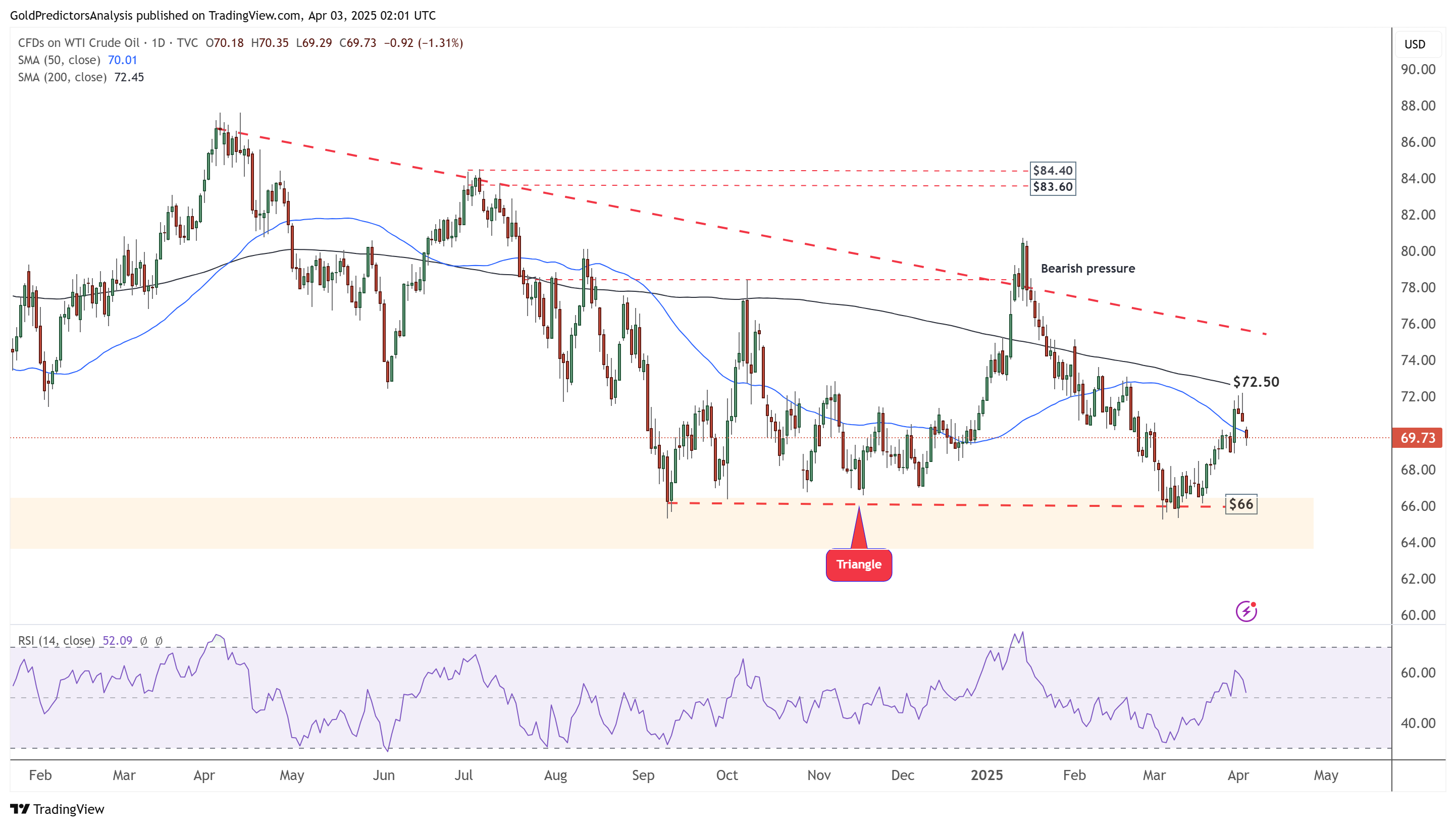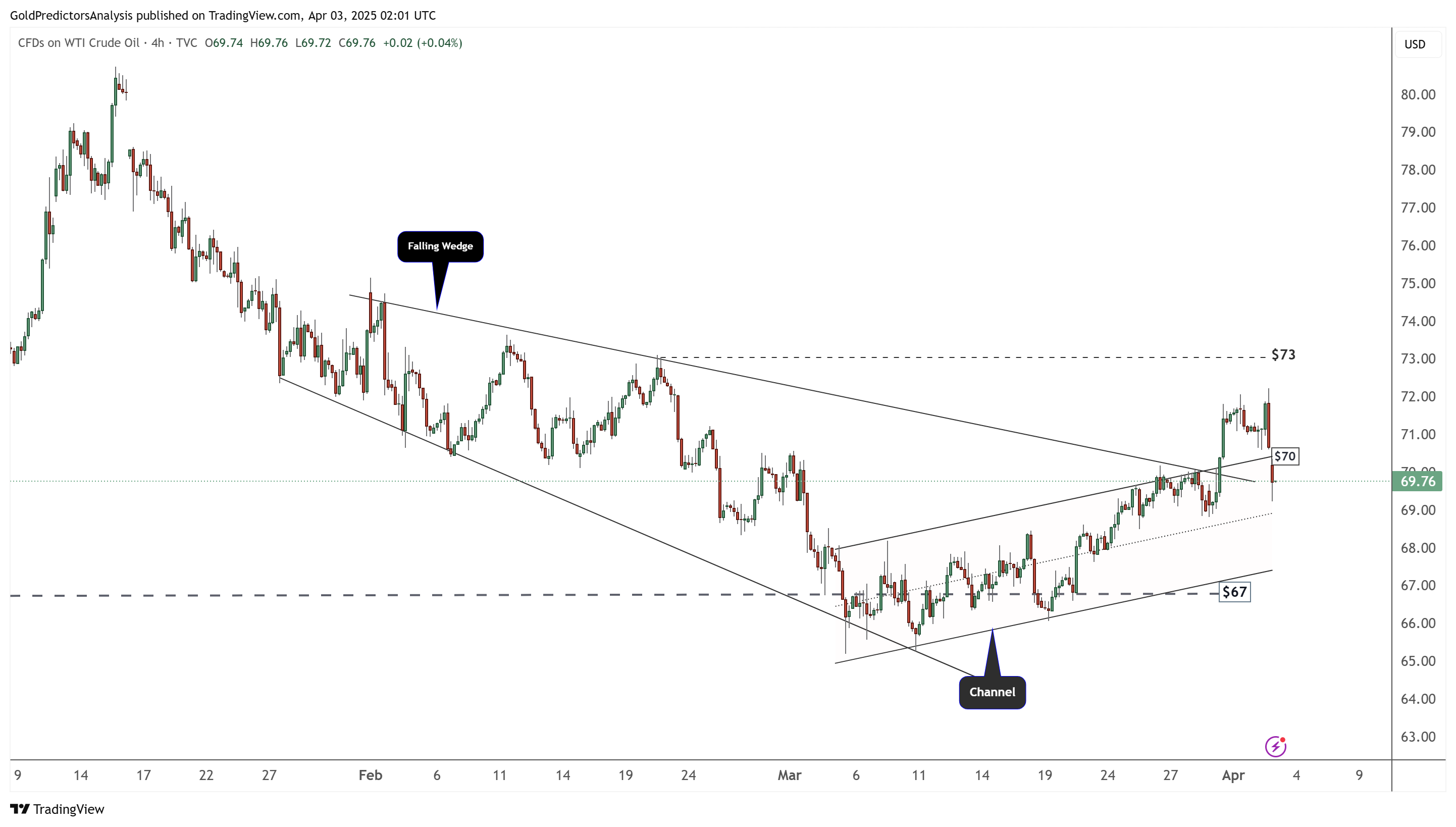 Oil prices dropped sharply following President Trump’s reciprocal tariffs on major trading partners. Brent crude oil (BCO) fell below $73, while WTI crude oil (CL) dipped below $70. The announcement fueled concerns of a global trade war, which could hurt global economic growth. Investors responded quickly, fearing that slower growth would reduce the demand for crude oil. Market sentiment turned bearish despite previous gains, highlighting how sensitive oil prices are to macroeconomic developments.
Oil prices dropped sharply following President Trump’s reciprocal tariffs on major trading partners. Brent crude oil (BCO) fell below $73, while WTI crude oil (CL) dipped below $70. The announcement fueled concerns of a global trade war, which could hurt global economic growth. Investors responded quickly, fearing that slower growth would reduce the demand for crude oil. Market sentiment turned bearish despite previous gains, highlighting how sensitive oil prices are to macroeconomic developments.
Trump described April 2 as “Liberation Day,” signaling the start of a new trade stance. His administration imposed a 10% baseline tariff on all imports and higher duties on key trading partners. While oil, gas, and refined products were exempt, the broader impact on global trade remains concerning. These tariffs could raise inflation, disrupt supply chains, and reduce industrial activity. These changes would likely slow down oil demand in developed and emerging markets. The uncertainty around how these policies will unfold created immediate downward pressure on oil prices.
Moreover, US crude inventory data added to market worries. The EIA reported a surprise increase of 6.2 million barrels in weekly stockpiles, as shown in the chart below. The large build signals weakening domestic demand or higher production levels. This data created a negative outlook for oil in the short term. Traders now watch closely for policy updates and economic indicators that could shape future demand expectations.
Oil Daily Chart – Resistance of $72.50
The daily chart for WTI crude oil hits the resistance of the 200-day SMA at $72.50 and corrects lower. A break above $72.50 will indicate a further move toward the $75 price zone. However, a break below $66 will indicate further downside for WTI crude oil.

Oil 4-Hour Chart – Resistance Zone of $72.50-$73
The 4-hour chart for WTI crude oil shows that the price reversed within the channel after breaking from the $70 area. A breakout from the falling wedge pattern indicates bullish momentum. However, if prices fail the $67 support area, the oil market may initiate a strong decline.













